

|
OPAL Events at LEP1 |
During the first phase of LEP (1989-1995), electron and positron beams collided with enough energy that they usually interact by annihilating into the Z boson . The Z boson usually decays into pairs of fermions. The Z boson arises in the Standard Model of particle physics as a result of the unification of the electromagnetic and weak interactions. A primary purpose of LEP is to measure precisely the production of the Z boson and its decay into different kinds of particles.
You can view displays of some typical events recorded at LEP in the OPAL detector .
The displays show decays of the Z boson into leptons and into quarks.
Tracks measured in the central tracking system are shown in blue. Small green boxes show hits in the time-of-flight system. Clusters of energy in the lead glass electromagnetic calorimeter are shown as yellow boxes, of size proportional to their energy. Similarly, clusters of energy in the hadron calorimeter are drawn in magenta, and energy in the forward luminosity calorimeters in green. Penetrating charged particle tracks, which are candidates for muons, are shown as red arrows.
You can get the pictures in either of two formats, gif (which is smaller and thus faster to display on your screen) or PostScript (which contains higher precision and is thus better for printing).
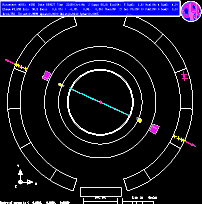
click on display to get full size picture ( ps file) |
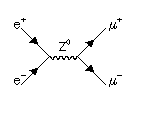
Feynman diagram |
A similar event is shown here but in this case a photon has been emitted by one of the muons, shown as a cluster in the electromagnetic calorimeter with no associated track.
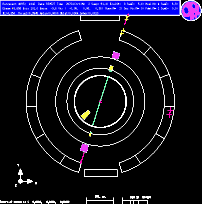
click on display to get full size picture ( ps file) |
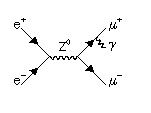
Feynman diagram |
Occasionally an emitted photon may produce an additional pair of muons, as in this event
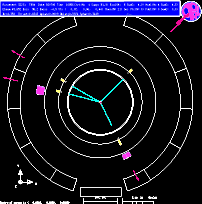
click on display to get full size picture ( ps file) |
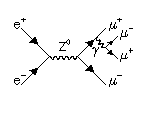
Feynman diagram |
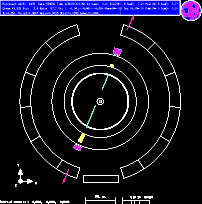
click on display to get full size picture ( ps file) |
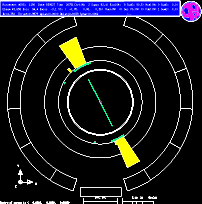
click on display to get full size picture ( ps file) |
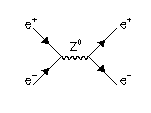
Feynman diagram |
The production of electron-positron pairs can also occur by the exchange of a photon (or Z), and this mechanism tends to dominate when the particles are emitted at small angles to the beams. In this event, a photon is also observed, in the forward calorimeter. A possible Feynman diagram is shown, though the photon could be emitted by any of the electrons or positrons, and the process could also proceed via a Z boson .
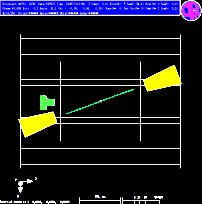
click on display to get full size picture ( ps file) |
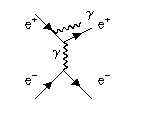
Feynman diagram |
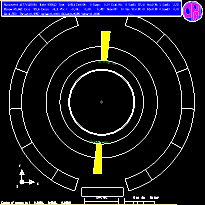
click on display to get full size picture ( ps file) |
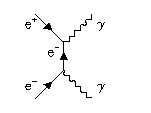
Feynman diagram |
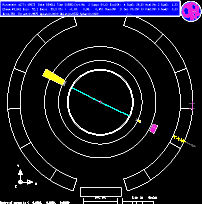
click on display to get full size picture ( ps file) |
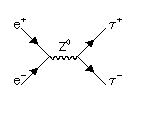
Feynman diagram |
| One of the tau leptons has decayed to three charged pions, and the other to one charged pion. | Zoom: the tau->3 pions decay point is displaced from the collision point (the red marker in the centre). From events like this, the lifetime of the tau may be measured. | In the final event, both of the taus have decayed to three charged pions, and a photon has also been emitted. |
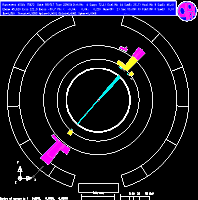
click on display to get full size picture ( ps file) |
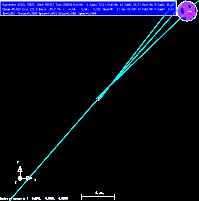
click on display to get full size picture ( ps file) |
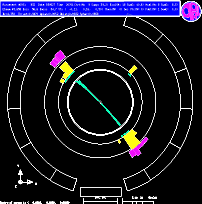
click on display to get full size picture ( ps file) |
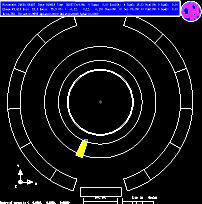
click on display to get full size picture ( ps file) |
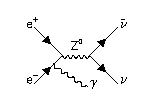
Feynman diagram |
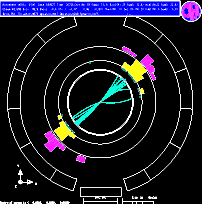
click on display to get full size picture ( ps file ) |
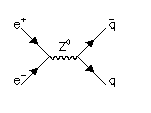
Feynman diagram |
Sometimes, an energetic gluon (a quantum of the colour field) may be emitted by one of the quarks. In an event like this, a third jet may be seen. The three-jet structure of the event is also nicely shown by a "lego plot". The study of events like these allow us to test the theory of the strong interactions, Quantum ChromoDynamics (QCD).
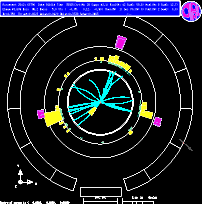
click on display to get full size picture ( ps file ) |
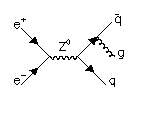
Feynman diagram |
| A decay of a K0 meson is shown by the magenta tracks: | If we zoom in, we see clearly displaced vertices in both jets. |
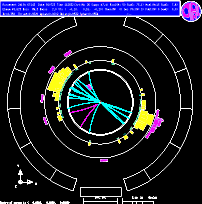
click on display to get full size picture ( ps file) |
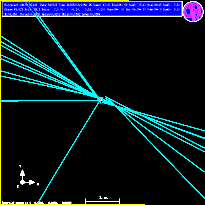
click on display to get full size picture ( ps file) |
The next event is a candidate for the production of a Bs meson (bound state of b and s quarks) decaying into J/psi + phi. The two yellow tracks are probably K+ and K- produced from the decay of a phi meson.
| Large view: The magenta tracks are muons from the decay of a J/psi: | If we zoom in, we see that these tracks form a displaced vertex. |
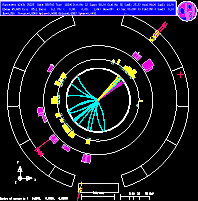
click on display to get full size picture ( ps file) |
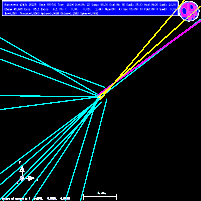
click on display to get full size picture ( ps file) |
In the next picture, we have a three-jet event. The most energetic jet (the one going to the bottom of the picture) is likely to be the quark which didn't radiate a gluon. The jet moving to the top right may be identified as a b-quark jet - in this case because an energetic muon was produced in the decay of the b-hadron (in other events vertex tagging may be used to tag b-quark jets). Thus the third jet is identified as the gluon jet, and permits the comparison of the properties of quark and gluon jets, which is an important test of QCD.
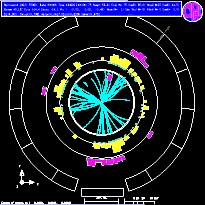
click on display to get full size picture ( ps file) |
| An example is shown here, where an isolated photon is seen towards the lower right: | A more extreme case, where the photon carries about half the collision energy is shown in this second event: | In our third example the photon is detected in the forward calorimeter: |
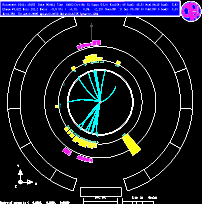
click on display to get full size picture ( ps file) |
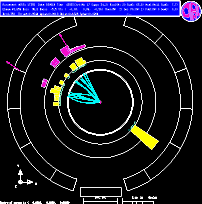
click on display to get full size picture ( ps file) |
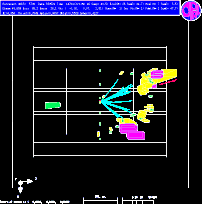
click on display to get full size picture ( ps file) |
The Feynman diagrams look like this
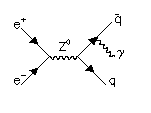 for final state radiation |
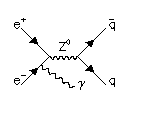 for initial state radiation. |